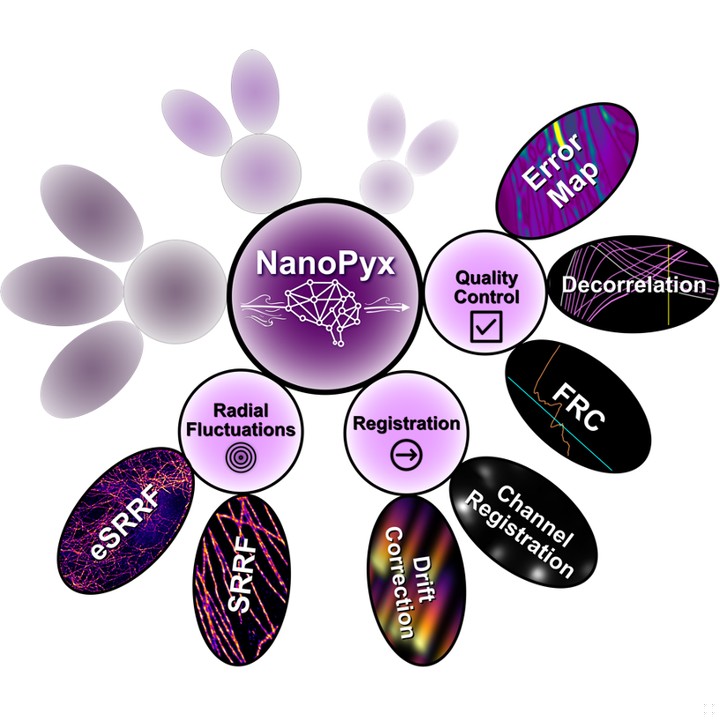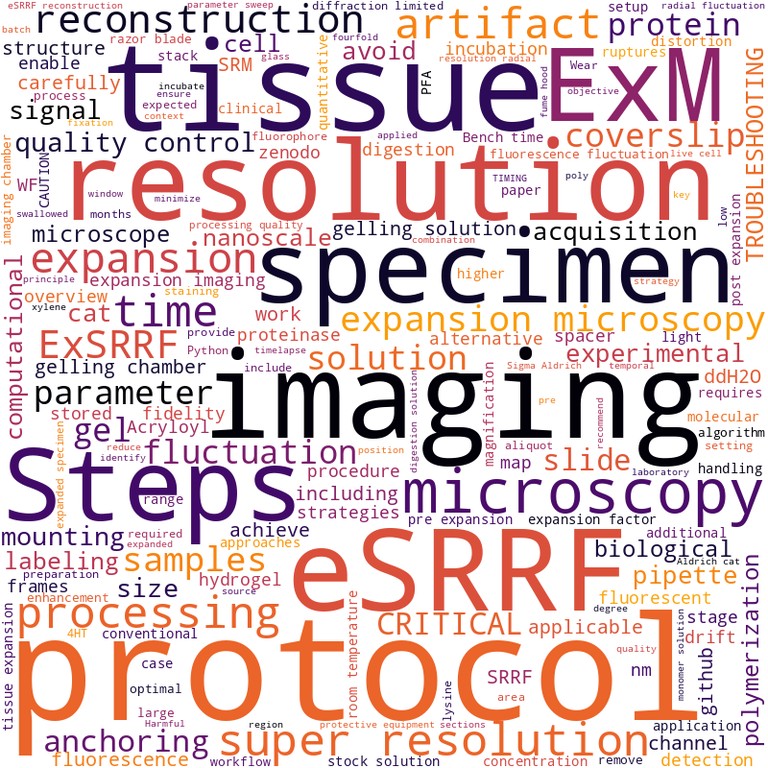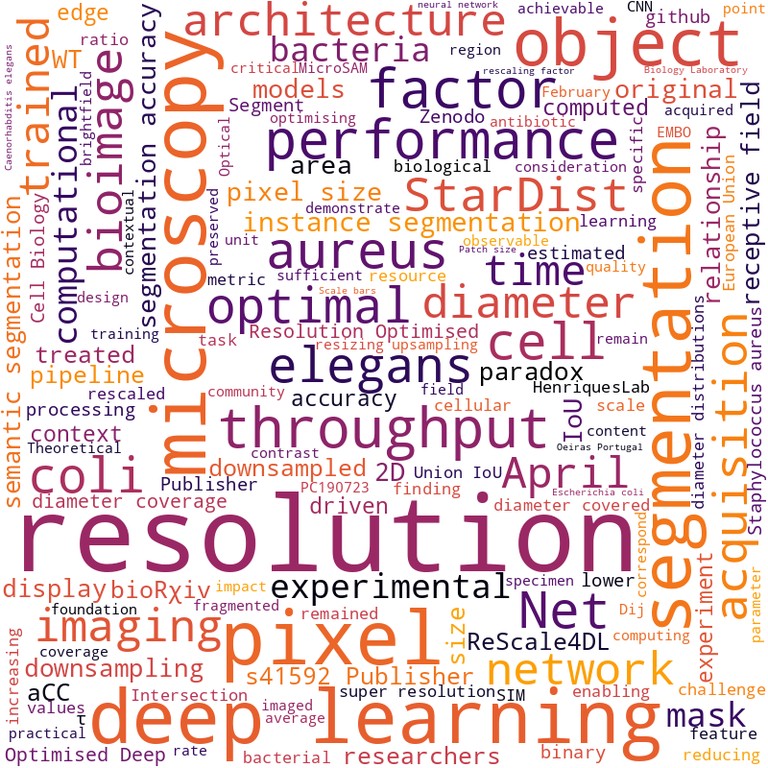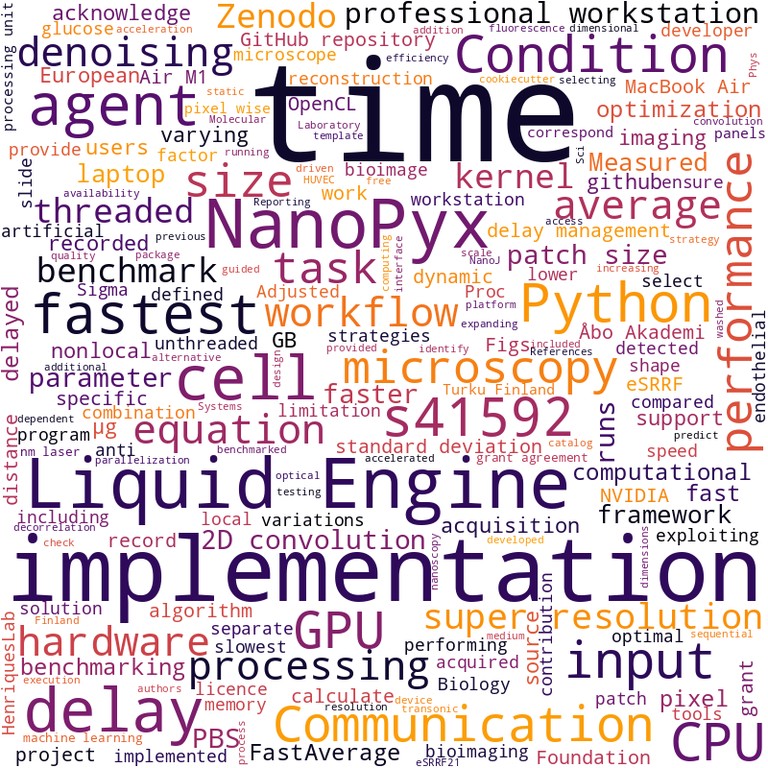Technology

NanoPyx
GitHub:
- HenriquesLab/NanoPyx
- HenriquesLab/napari-NanoPyx
Publication: Saraiva et al. Nature Methods 2025
- 7
Introduction
NanoPyx is an adaptive bioimage analysis framework designed to accelerate the processing of large and complex microscopy datasets. At its core is the Liquid Engine, an agent-based machine learning system that dynamically optimizes image analysis by predicting the best implementation strategies.
Moving Beyond Traditional Frameworks
NanoPyx innovates by moving beyond traditional frameworks that rely on single algorithms or implementations. The Liquid Engine generates multiple variations of code using different parallelization approaches, including:
- Multi-threading with OpenMP
- GPU acceleration with OpenCL
- Just-in-time compilation with Numba
This creates a competitive environment where different versions of the algorithms race against each other, with the Liquid Engine selecting the fastest one moment-to-moment based on factors like available hardware and properties of the input data.
Liquid Engine Components
The Liquid Engine features three main components:
-
Meta-programming tools: Automatically generate optimized CPU and GPU implementations from code snippets, avoiding tedious manual coding of parallelized versions.
-
Automatic benchmarking system: Profiles and records execution times for each implementation across diverse hardware configurations and input data, logging runtime metrics locally to train models.
-
Supervisor agent: Uses benchmarking data to choose the best combination of implementations to maximize speed, employing machine learning approaches to detect delays and probabilistically select alternatives.
Accelerating Super-Resolution Microscopy Analysis
NanoPyx accelerates key super-resolution microscopy analysis steps, including:
- Drift correction
- Channel registration
- Reconstruction algorithms
- Resolution assessment
It builds on ImageJ plugins like NanoJ-SRRF and NanoJ-SQUIRREL but brings them into an optimized Python ecosystem.
Accessibility and Interfaces
To ensure accessibility, NanoPyx offers three interfaces:
- Python library for developers
- Jupyter notebooks with graphical widgets for non-coders
- Napari plugin for an interactive experience
Continuous Auto-Tuning
The Liquid Engine agent continually monitors execution times and detects delays. If a chosen implementation suddenly slows down due to factors like hardware hiccups, the agent adjusts by probabilistically switching methods for optimum speed. This auto-tuning allows NanoPyx to learn patterns over time.
Performance and Future Development
In initial testing, NanoPyx delivered a 10x speedup for tasks like super-resolution reconstruction. The adaptability of the Liquid Engine is key, as the optimal implementation varies across users' devices. NanoPyx runs tests to select the ideal approach for each platform. Ongoing development will focus on supporting emerging techniques like AI-assisted imaging.
Final overview
NanoPyx introduces an innovative design that departs from traditional bioimage analysis frameworks. By dynamically optimizing parallelization strategies tailored to users' environments, it accelerates critical processing workflows for microscopy. The Liquid Engine enables continuous auto-tuning to maximize speeds as data scales expand. With accessibility via multiple interfaces, NanoPyx makes state-of-the-art analysis methods readily usable by the research community.
Publications featuring NanoPyx

|
Expansion and fluctuations-enhanced microscopy for nanoscale molecular profiling of cells and tissues Dominik Kylies, Hannah S. Heil, Arturo G. Vesga, Mario Del Rosario, Maria Schwerk, Malte Kuehl, Milagros N. Wong, Victor G. Puelles, Ricardo Henriques Paper published in Nature Protocols, July 2025 Technologies: NanoJ (), NanoJ-eSRRF (), NanoJ-SQUIRREL (), NanoJ-SRRF (), NanoPyx () and Nuclear-Pores as references Funded by: CZI, EMBO, ERC, FCT, H2021 and H2022 DOI: 10.1038/s41596-025-01178-0 |
|

|
ReScale4DL - Balancing Pixel and Contextual Information for Enhanced Bioimage Segmentation Mariana G. Ferreira, Bruno M. Saraiva, António D. Brito, Mariana G. Pinho, Ricardo Henriques, Estibaliz Gómez-de-Mariscal Preprint published in bioRxiv, April 2025 Technologies: BioImage Model Zoo (), DeepBacs (), DL4MicEverywhere (), NanoPyx (), Rescale4DL () and ZeroCostDL4Mic () Funded by: CZI, EMBO, ERC, H2021 and H2022 DOI: 10.1101/2025.04.09.647871 |
|

|
Efficiently accelerated bioimage analysis with NanoPyx, a Liquid Engine-powered Python framework Bruno M. Saraiva, Inês Cunha, António D. Brito, Gautier Follain, Raquel Portela, Robert Haase, Pedro M. Pereira, Guillaume Jacquemet, Ricardo Henriques Paper published in Nature Methods, January 2025 Technologies: Fast4DReg (), NanoJ (), NanoJ-eSRRF (), NanoJ-SQUIRREL () and NanoPyx () Funded by: CZI, EMBO, ERC, FCT, H2021 and H2022 DOI: 10.1038/s41592-024-02562-6 |
|
Funding contributing to NanoPyx

|
VirusAwareScopes - Machine Learning-Driven Adaptive Microscopy for Long-Term Viral Infection Studies Ricardo Henriques Alias: VirusAwareScopes Funded by: La Caixa Foundation - Health Research Duration: November 2025 - October 2028 |

|
Cutting-edge super-resolution image analysis in napari through NanoJ Bruno Saraiva, Ricardo Henriques Funded by: CZI - Applications - napari Plugin Foundations grants Duration: January 2023 - December 2023 Publications: 3 |